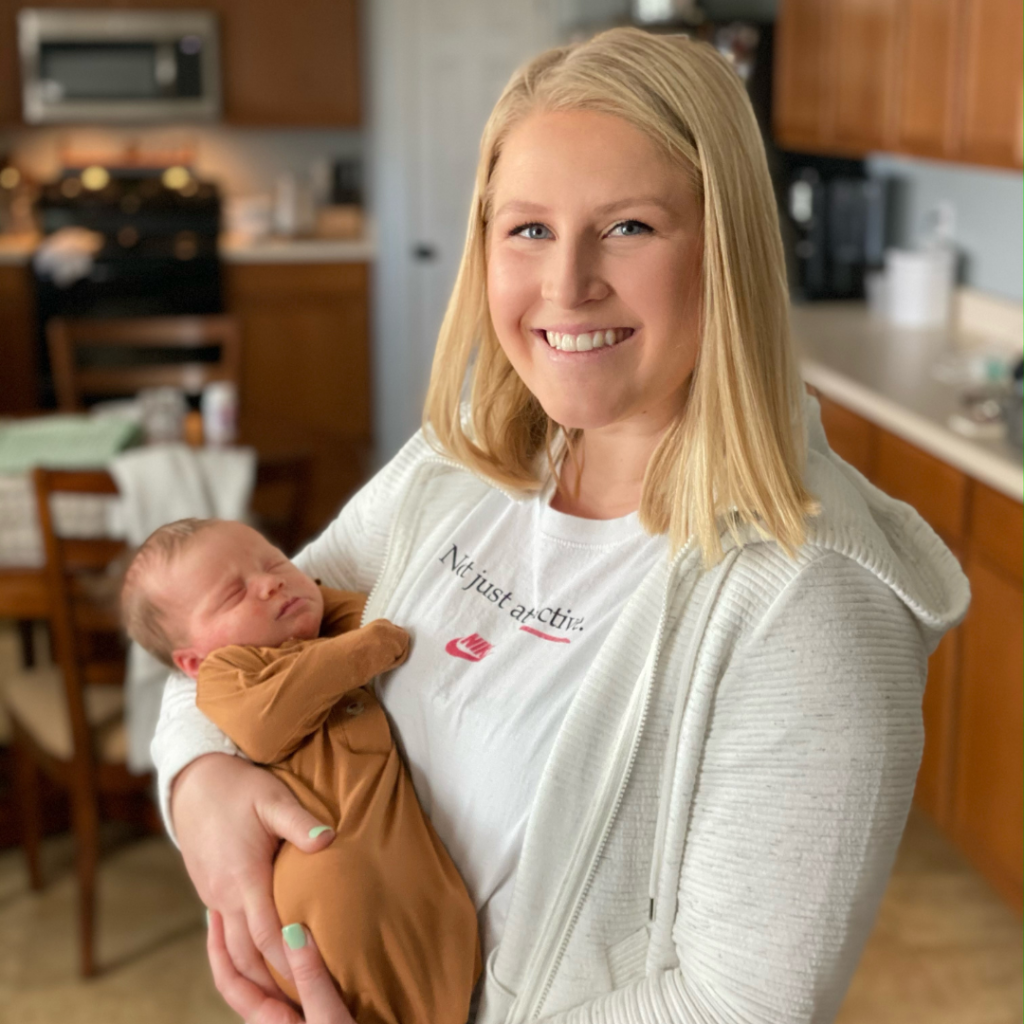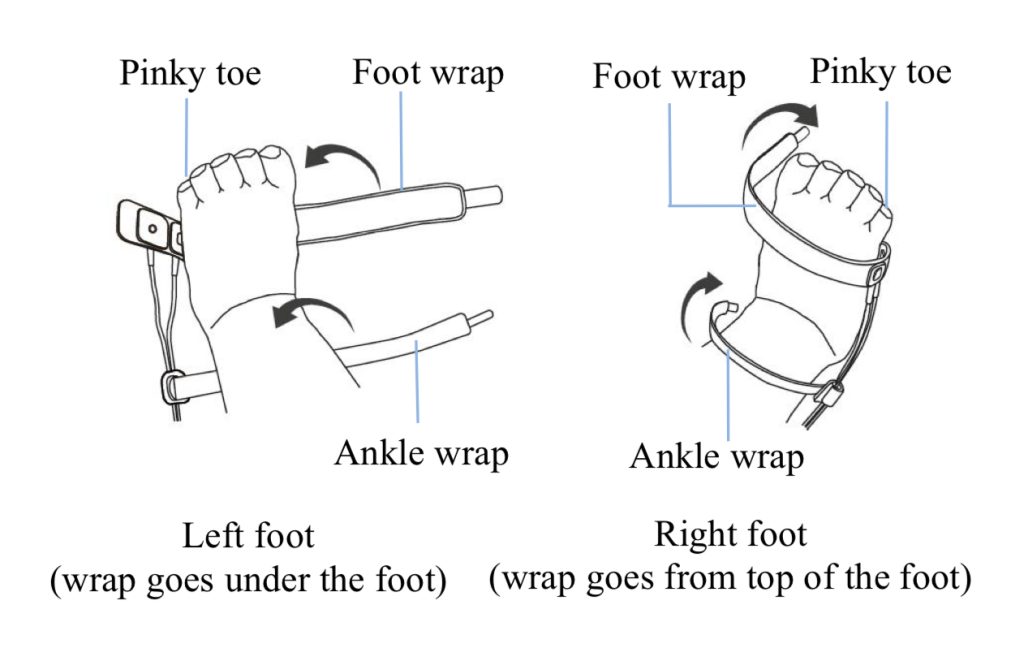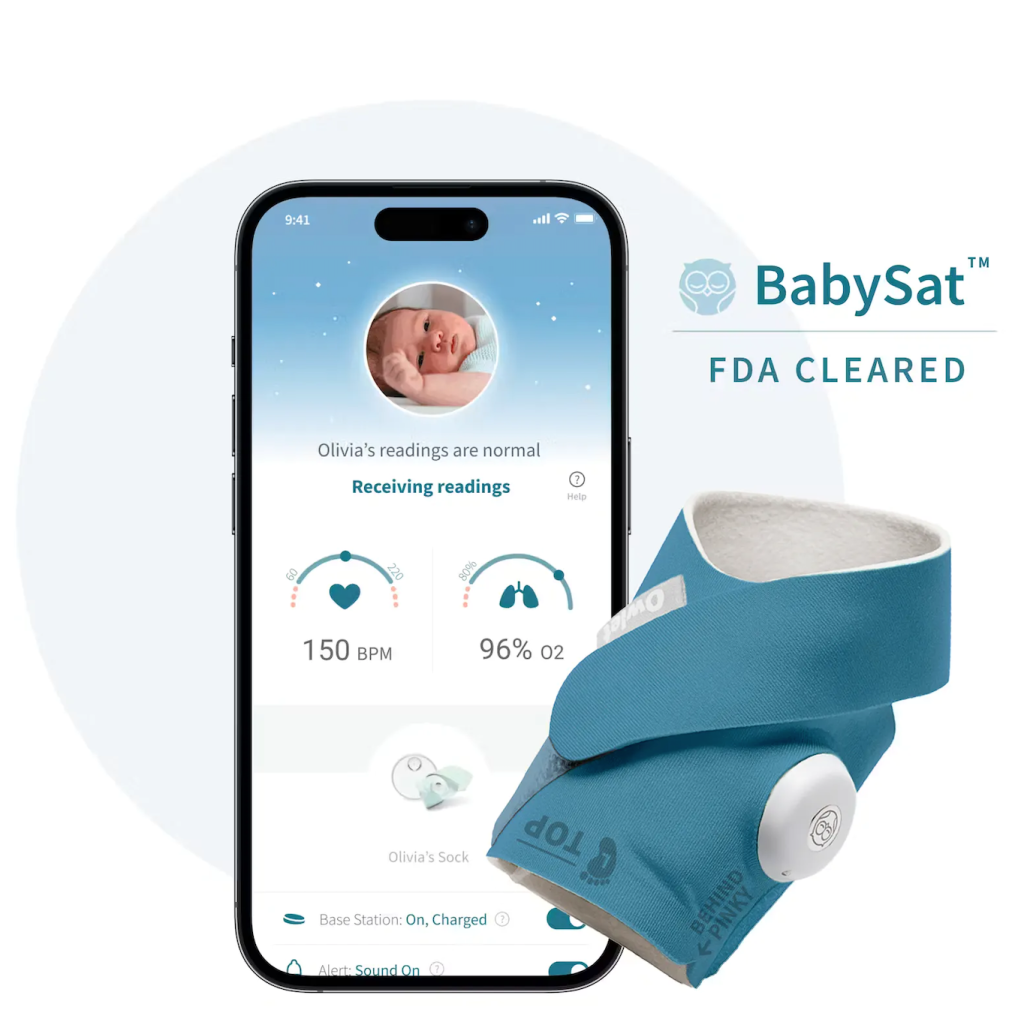Infant Pulse Oximetry: Owlet and More
Updated, July 2, 2025 – Wearable devices for newborns notify parents and caregivers if babies’ heart rates or oxygen levels are out of the normal range. While many parents report the devices give peace of mind, some were pulled from the shelves in 2021 and many are still for sale. So should you use one for your newborn? We break down Infant Pulse Oximetry below.
Infant Pulse Oximetry: What is it?
A pulse oximeter is a small device that measures how much oxygen is in the blood and how fast the heart is beating. Parents of NICU babies might use a pulse oximeter at home because a premature baby’s lungs are often underdeveloped in the early weeks. Here’s what parents of newborns and infants should know about infant pulse oximetry and wearable monitoring systems for newborns:
- What do Pulse Oximeter’s do? They monitor a baby’s breathing and overall oxygenation, which is especially important for: premature infants, those with respiratory issues, or baby’s recovering from illness.
- Prescription Based– Many are available by prescription only. Prescriptions are for babies who may benefit from additional monitoring at home with a medical grade device.
- Physician Supervised – A physician sets the range of normal for pulse rate and oxygen saturation level. An alert sounds when your baby’s reading falls outside of these levels.
A pulse oximeter for a newborn is usually a wearable “sock” style device that wraps around baby’s foot and remains on while baby is asleep.

What About Safe Sleep Recommendations?
In the past doctor’s have cautioned against using wearable devices to monitor our babies’ vital signs. Medical grade devices are used in hospital NICU’s of course, but home monitors were not recommended because of little regulation and false alarms. In 2022 the American Academy of Pediatrics also amended Safe Sleep recommendations stating that parents should avoid commercial devices that claim to reduce the risk of SIDS or other sleep-related deaths. AAP further states that the use of products claiming to increase sleep safety may provide a false sense of security and complacency for caregivers.
For these reasons, infant pulse oximeters should be medical grade and used under a physician’s direction.
Popular brand Owlet explains:
The AAP recommends avoiding the use of commercial devices that claim to reduce the risk of SIDS or other sleep-related deaths. BabySat is a prescription-only, medical pulse-oximeter device that is intended for babies that a healthcare provider determines could benefit from at-home monitoring while under the supervision of a physician. It is not intended to reduce the risk of SIDS or other sleep-related deaths, but will notify parents in real-time if their baby needs assistance and their pulse rate or oxygen saturation level falls too low or too high based on ranges set by their physician.

Remember to Use These Items Correctly
Pulse oximeters are essential for tracking your baby’s oxygen levels, but using them on a restless infant can be tricky and exhausting. Challenges like keeping the sensor in place and avoiding false alarms are common, especially when sleep-deprived. Safe, accurate pulse oximeter readings are just as important as the devices themselves and it’s important to know how to place them.
As always, decisions about your infant’s health should be made by you and your child’s primary care doctor.
Infant Pulse Oximetry- But What About Other Sleep Items?
Parents as well as postpartum doulas, night nannies and nurses want facts when it comes to safe sleep. So you should know that any product intended or marketed for infant sleep must meet a federal safety standard. While some have this standard, it’s important to note that rockers, pillows, nappers and inclined sleepers have not. These items have been banned for sale and recalled. This is because the product’s incline enables infants’ heads to slump forward. This compresses the trachea and blocks airflow. This leads to lack of oxygen.
Whether parents choose to use monitors or not, the safest way for your baby to sleep is alone, on a firm flat mattress without anything else in the crib. If you are hiring a postpartum doula, night nurse or newborn caregiver, ensure that they understand safe sleep practices.
{ “@context”: “https://schema.org”, “@graph”: [ { “@type”: “BreadcrumbList”, “itemListElement”: [ { “@type”: “ListItem”, “position”: 1, “name”: “Home”, “item”: “https://letmommysleep.com” }, { “@type”: “ListItem”, “position”: 2, “name”: “Newborn Care Resources”, “item”: “https://letmommysleep.com/blog/category/safety-and-gear/” }, { “@type”: “ListItem”, “position”: 3, “name”: “Infant Pulse Oximetry”, “item”: “https://letmommysleep.com/blog/2025/07/01/infant-pulse-oximetry/” ] }, { “@type”: [“MedicalWebPage”, “Article”], “@id”: “https://letmommysleep.com/blog/2025/07/01/infant-pulse-oximetry/”, “mainEntityOfPage”: “https://letmommysleep.com/infant-pulse-oximetry”, “headline”: “Infant Pulse Oximetry: What Parents Should Know”, “alternativeHeadline”: “Should You Use a Wearable Pulse Oximeter for Your Newborn?”, “description”: “Updated July 2, 2025 — Wearable devices for newborns can track heart rate and oxygen saturation, but not all are medically approved. Learn about medical-grade pulse oximeters, safe use, and updated AAP guidance on infant sleep monitors.”, “datePublished”: “2025-07-02”, “dateModified”: “2025-07-02”, “author”: { “@type”: “Person”, “name”: “Let Mommy Sleep Nursing Team”, “jobTitle”: “Registered Nurses and Certified Newborn Care Providers”, “url”: “https://letmommysleep.com/lms/our-story” }, “publisher”: { “@type”: “Organization”, “name”: “Let Mommy Sleep”, “url”: “https://letmommysleep.com”, “logo”: { “@type”: “ImageObject”, “url”: “https://letmommysleep.com/logo.png” } }, “about”: [ “infant pulse oximetry”, “newborn monitoring devices”, “safe sleep guidelines”, “American Academy of Pediatrics”, “NICU home monitoring”, “medical-grade wearable baby monitors” ], “articleSection”: [ “What Is Infant Pulse Oximetry”, “Prescription-Based Devices”, “Safe Sleep Recommendations”, “Proper Use of Pulse Oximeters”, “Other Sleep Products and Recalls” ], “keywords”: [ “infant pulse oximeter”, “wearable baby monitor safety”, “AAP safe sleep guidelines”, “premature infant oxygen monitoring”, “medical-grade baby devices” ], “speakable”: { “@type”: “SpeakableSpecification”, “xpath”: [ “/html/head/title”, “/html/body//h1”, “/html/body//h2” ] } }, { “@type”: “FAQPage”, “mainEntity”: [ { “@type”: “Question”, “name”: “What is an infant pulse oximeter?”, “acceptedAnswer”: { “@type”: “Answer”, “text”: “A pulse oximeter is a small device that measures how much oxygen is in the blood and how fast the heart is beating. For infants, especially premature babies or those with respiratory issues, a pulse oximeter can help ensure safe oxygenation levels while under medical supervision.” } }, { “@type”: “Question”, “name”: “Should parents use wearable baby monitors for oxygen or heart rate?”, “acceptedAnswer”: { “@type”: “Answer”, “text”: “While commercial baby monitors may offer peace of mind, they are not regulated medical devices. The American Academy of Pediatrics advises against using consumer products that claim to reduce SIDS risk. Only medical-grade, prescription-based pulse oximeters used under a physician’s supervision should be used for infant monitoring.” } }, { “@type”: “Question”, “name”: “What are the AAP safe sleep recommendations about baby monitors?”, “acceptedAnswer”: { “@type”: “Answer”, “text”: “The AAP’s 2022 Safe Sleep recommendations caution parents to avoid using commercial devices marketed to prevent SIDS or sleep-related deaths. These devices may create a false sense of security. The safest sleep practice remains placing baby on their back on a firm, flat surface, free of pillows, bumpers, or sleep positioners.” } }, { “@type”: “Question”, “name”: “How should infant pulse oximeters be used safely?”, “acceptedAnswer”: { “@type”: “Answer”, “text”: “Pulse oximeters should only be used under a doctor’s direction. The device should fit securely around baby’s foot, and caregivers should ensure accurate placement to prevent false alarms. For accurate results, follow the physician’s instructions and monitor for comfort and temperature.” } }, { “@type”: “Question”, “name”: “Are inclined sleepers and rockers safe for babies?”, “acceptedAnswer”: { “@type”: “Answer”, “text”: “No. Inclined sleepers, rockers, nappers, and similar products have been recalled and banned because their incline can cause babies’ heads to fall forward, blocking airflow. All products marketed for infant sleep must meet federal safety standards.” } } ] } ] }
Categories
- Corporate Care & Partners
- COVID19 Archive
- En Espanol
- Expert Guides
- Hiring a Night Nanny
- Infant Safety
- Infant Sleep Hub
- Newborn Care
- Postpartum Health
- Twins & Multiples
- Work as a Night Doula
- zPost Archives
